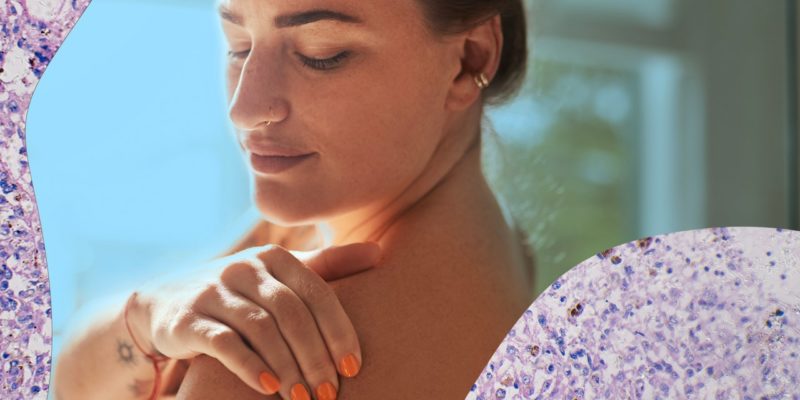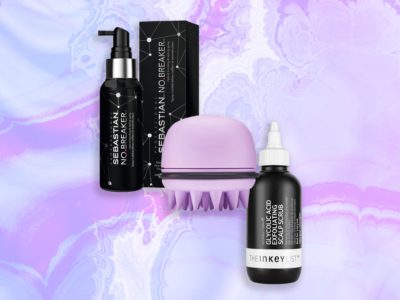
However, not all skin cancer comes from a preexisting mole. Says Hale, “It’s thought that two-thirds of melanoma occurs de novo, meaning there wasn’t a mole there previously.”
The best thing you can do is know your body, so you can notice a change and protect your skin. “Sun exposure or sunburns can actually make a mole turn,” says Hale. “It can accumulate mutations and go from being a benign mole to an atypical mole, or even progress to melanoma.”
Don’t ignore the little things.
Size matters, but it’s not the end all, be all. “I’m not comfortable guiding people to say you should only see your dermatologist when you find something obvious, because we don’t need to be looking at the obvious,” says Markowitz. “Smaller is better — and I don’t recommend that people wait to see the ABCDEs, because that may end up being a more advanced lesion.”
Look everywhere — seriously, everywhere.
Sun-exposed or unexposed skin matter equally. “About 10 percent of skin cancers are not caused by the sun, and they can occur in covered areas [of the body] as well,” Hale explains.
This is true for your face and body: “We look at our faces in the mirror all day, but we don’t often look at our body,” she says. “And it’s important to look at the front and the back of the body, because cancer really can occur anywhere.”
For hard-to-see spots, like your back, ask a loved one for help, or use technology. “Take photos with your cell phone so you can follow all of those areas closely,” says Henry. And keep hotspots in mind. Notes Farhang, “Some of the most common sites for women can be the backs of the legs, and for men, the back.”
For those with darker skin tones, it’s especially important to examine the tops and bottoms of your hands and feet. “Acral lentiginous melanoma — found on the hands and feet — may be less influenced by the sun, but definitely more by genetics,” says Henry.
As you examine yourself, scan your entire body, including your scalp, face, hands, arms, torso, back, legs, and feet. Says Farhang, ask yourself, “Is there a mole that’s weirdly itchy? Is it symptomatic? Is it inflamed? Is it kind of pink?”
This is true from head to toe, including your scalp. “Feel if there are any lumps and bumps, and ask your hairdresser to look through the hair for any dark moles, because it’s much easier to look through hair when it’s wet,” says Farhang. You can also use a blow-dryer at home to move your hair out of the way and get a better look at your scalp, according to Hale.





